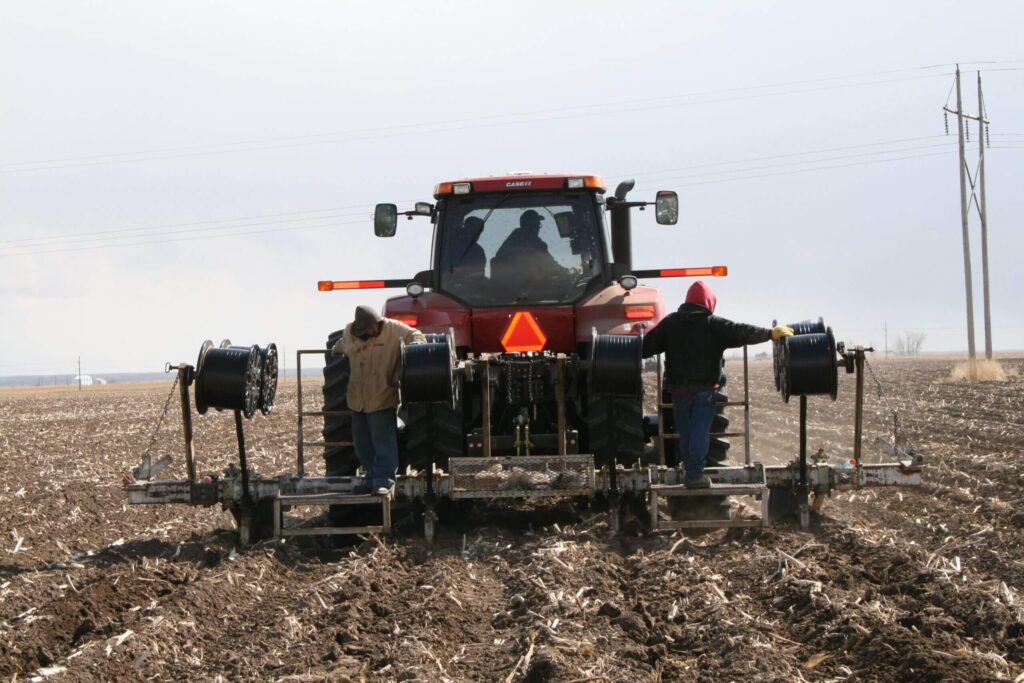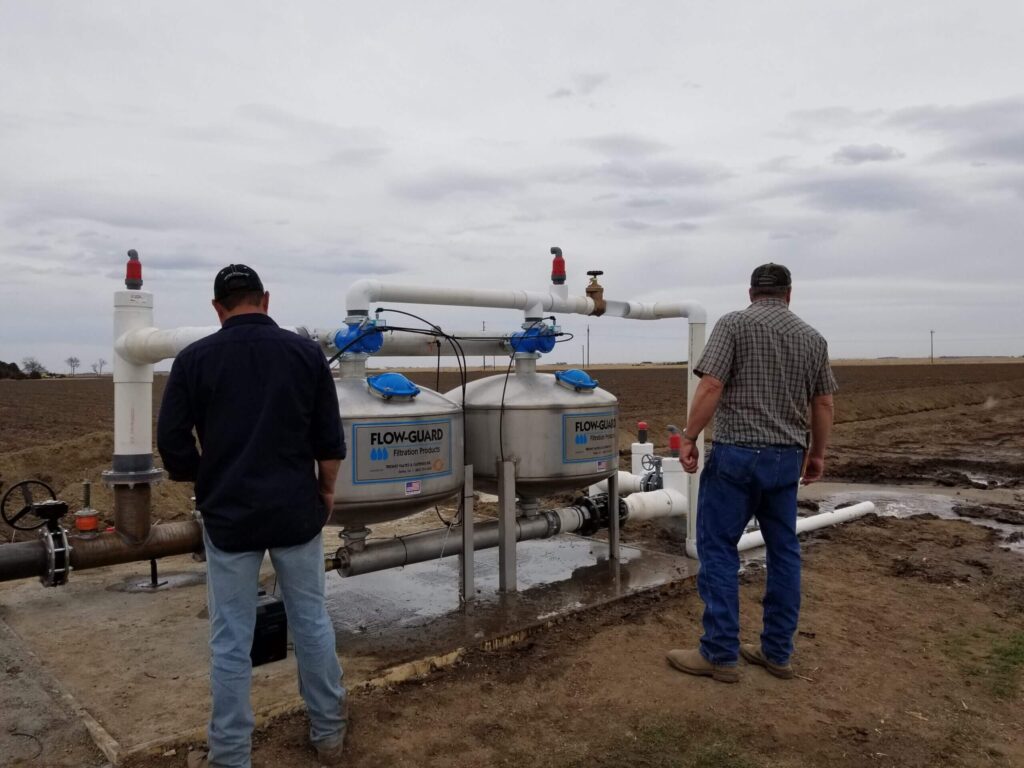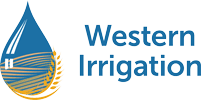Irrigation for Corn Near Me Ogallala NB
Welcome to our comprehensive guide on irrigation for corn crops! If you’re in the market for ways to improve your corn yield and maximize your profits, then you’ve come to the right place. Corn is a staple crop that provides food, feed, and fuel for millions of people around the world. However, growing healthy and high-yielding corn requires more than just planting seeds and hoping for rain. Irrigation plays a crucial role in the success of any corn harvest as it ensures consistent access to water throughout the growing season. In this blog post, we will dive into essential tips and techniques for irrigating for corn near me. Whether you are a seasoned farmer or new to agriculture, these insights will help you make informed decisions about irrigation methods best suited for your specific needs and location. So let’s get started on optimizing your corn production with sustainable irrigation practices near Ogallala NB!
Understanding the Importance of Proper Irrigation for Corn Crops
Corn, a staple crop in agriculture, plays a vital role by providing food, feed, and fuel. Successful yields for farmers depend on proper irrigation, ensuring optimal growth of corn crops. By supplying water at the right time and amount, farmers facilitate nutrient uptake, photosynthesis, and other metabolic processes, allowing corn plants to reach their full potential.
The significance of proper irrigation is amplified when considering the global demand for corn. Being the second most-produced crop worldwide, corn is relied upon by millions of people. Therefore, it is crucial to grow and harvest corn sustainably and efficiently. The importance of proper irrigation cannot be overstated, as it directly contributes to the overall success of corn crops.
Properly irrigating corn crops has a multitude of benefits, including improving the overall yield, enhancing the quality of harvested corn, and minimizing the risks of crop damage due to water stress or drought. It enables farmers to optimize their agricultural practices, leading to a more sustainable and productive corn industry.

Factors to Consider Before Irrigating Your Corn Crops
When it comes to irrigating corn crops, several factors must be considered before making any decisions. Firstly, assessing the current soil moisture level and reviewing the upcoming weather forecast are essential steps. This information will help determine the required amount of water and the appropriate timing for irrigation. Additionally, it’s crucial to consider the type of irrigation system to be used, as certain options may offer greater efficiency and cost-effectiveness. Other important factors that impact the irrigation decision include the field’s topography, the crop size, and the availability of water sources. By carefully evaluating these factors, farmers can ensure healthier and more productive corn crops, leading to better yields. Taking the time to consider these aspects helps farmers make informed decisions, resulting in thriving corn crops and successful harvests. Ultimately, this thoughtful approach to irrigation is key to sustaining agricultural success and maximizing yields.
Types of Irrigation Systems Suitable for Corn Crops
When it comes to corn crops, irrigation is crucial for a successful yield. There are various types of irrigation systems available that are suitable for corn crops. The most common system used is center pivot irrigation, which involves a circular pivot that rotates around a central point, spreading water across the field. This system is efficient and can cover a large area. Drip irrigation is also a suitable option for corn crops. It involves dripping water directly onto the soil, which reduces water waste and fertilization costs. Another system is flood irrigation, which is best suited for clay soils. This system involves flooding the field with water and letting it slowly seep into the soil. With proper research and expert advice, choosing the right irrigation system can significantly impact the success of your corn harvest.
a. Surface Irrigation: Surface irrigation is a widely used method for delivering water to crops in agriculture. This system of irrigation is based on the principle of gravity, where water is distributed over the surface of the land and then infiltrates into the soil to nourish the crops. The benefits of surface irrigation include its simplicity and cost-effectiveness. It requires minimal equipment and can be easily managed by farmers. However, to ensure the success of this system, careful consideration must be given to factors such as soil type, field size, and slope. By utilizing a professional approach to surface irrigation, farmers can maximize their crops’ yields while conserving water resources.
b. Sprinkler Irrigation: Sprinkler irrigation systems offer many benefits for agricultural operations, making them a popular choice for farmers worldwide. These systems use overhead sprinklers to distribute water evenly over crops, allowing for efficient water usage and reduced soil erosion. Additionally, sprinkler irrigation systems can be controlled remotely, enabling farmers to adjust water applications in real-time to suit changing weather conditions. This not only saves time and labor costs but also ensures crops receive the appropriate amount of water for optimal growth and yield. Overall, sprinkler irrigation is a reliable and effective method for irrigating crops, increasing their productivity and ultimately contributing to the sustained success of agricultural operations.
c. Drip Irrigation: Drip irrigation is a highly efficient and cost-effective way to water plants. The system uses a series of tubes to distribute water directly to the plant’s roots, reducing water waste and improving plant growth. With drip irrigation, water is applied slowly and steadily, preventing runoff and allowing the soil to absorb the water more thoroughly. This provides plants with the ideal amount of moisture, helping them thrive. Drip irrigation is also customizable, allowing for precise watering schedules and amounts, which can be tailored to the unique needs of each plant. As a professional, I highly recommend considering drip irrigation as an effective solution for watering your plants.

Calculating Water Requirements and Scheduling Irrigation for Your Corn Crops
Ensuring optimal crop growth and success relies heavily on providing the right amount of water. However, accurately determining water requirements for corn crops and scheduling irrigation can be daunting. Nevertheless, it is an essential task that guarantees maximum yield.
Factors such as crop stage, weather conditions, soil type, and evapotranspiration rates must be taken into account during the calculation process. Thankfully, farmers can employ various tools like soil moisture sensors and weather forecasts to effectively manage water usage and avoid over- or under-irrigation. Emphasizing proper irrigation scheduling not only benefits the crops but also plays a crucial role in conserving precious water resources.
Therefore, as a professional farmer, it is vital to invest time in comprehending and implementing the best water management practices for corn crops. By doing so, you ensure the long-term success and productivity of your crops while also contributing to sustainable agriculture.
Proper water management ensures the optimal growth and success of corn crops. By considering various factors and utilizing tools like soil moisture sensors and weather forecasts, farmers can effectively manage water usage, avoid wastage, and conserve precious resources. Implementing these practices is of utmost importance for both crop productivity and sustainable agriculture.
The Role of Weather and Climate in Efficient Irrigation Practices
The success of an irrigation system heavily relies on weather and climate conditions. The amount and timing of rainfall, temperature, and humidity levels dictate the irrigation schedule, making it more efficient and sustainable in the long run. Water scarcity is a critical issue worldwide, emphasizing the need to optimize water usage in agriculture. By tailoring irrigation systems to the specific needs of each crop, considering the local climate, soil type, and water source availability, productivity and yield can be increased while reducing water waste and energy consumption.
Proper water management practices and technological innovations are crucial in maintaining crop sustainability and profitability. Integrating knowledge of weather and climate into irrigation management can lead to more successful and sustainable agriculture practices. With these strategies, farmers can effectively mitigate the challenges posed by changing climate patterns and create resilient farming systems.
By implementing an irrigation system that takes into account weather and climate factors, farmers can achieve optimal production outcomes while minimizing environmental impact and costs. This approach not only enhances the resilience of the agricultural sector but also contributes to the overall sustainability of food production systems.
Considering the implications of weather and climate in irrigation management is paramount for the adoption of successful and sustainable agricultural practices. By integrating these factors into irrigation systems, farmers can improve productivity, reduce water waste, and promote long-term agricultural sustainability.
Implementing Smart Technology for Better Control and Management of Water Usage
Advancements in technology have revolutionized agriculture and irrigation practices. Smart irrigation systems, equipped with sensors, automated controllers, and weather-based scheduling, allow for precise and efficient water usage. These systems collect real-time data on soil moisture levels, plant needs, and weather conditions to adjust the irrigation schedule accordingly. This not only saves time and labor costs but also conserves water resources and reduces energy consumption. Farmers can also access data remotely, enabling them to make informed decisions about water usage even when they are away from the farm. As a professional farmer, I highly recommend investing in smart irrigation technology for optimal crop growth and sustainability. By implementing these innovative solutions, we can ensure the continued success of our crops while preserving valuable resources for future generations.
So, let’s embrace the advancements in technology and continue working towards a more sustainable agriculture industry.

Best Practices for Maintaining and Monitoring Your Irrigation System
To ensure the long-term success of your irrigation system, it is essential to regularly maintain and monitor it. This includes checking for leaks or clogs in the pipes, replacing worn-out parts, and adjusting sprinkler heads for proper water distribution. Additionally, monitoring soil moisture levels can help determine when and how much water to apply. Farmers should also keep track of weather patterns and adjust the irrigation schedule accordingly to avoid over or under-watering. Proper maintenance and monitoring not only ensure the efficiency of your irrigation system but also prolong its lifespan, saving you time and money in the long run. As a professional farmer, I highly recommend incorporating regular maintenance and monitoring into your overall irrigation management plan for optimal results. Let’s all work together towards sustainable and successful agriculture practices.
By implementing these best practices, we can not only increase the productivity of our crops but also contribute to a healthier and more sustainable environment. Let’s continue to educate ourselves and embrace new technologies and techniques for the betterment of our agricultural operations. Remember, proper irrigation is key to achieving the full potential of our crops and ensuring their long-term success.
Additional Tips for Maximizing Crop Yield with Sustainable Irrigation Methods
Achieving maximum crop yield while ensuring sustainable irrigation methods is a challenging process that requires continuous effort and implementation of the latest strategies. There are several additional tips that farmers can follow to increase crop production without compromising on the sustainability of irrigation practices. For instance, implementing precision irrigation techniques can help minimize water waste and maximize plant water uptake. Regular maintenance of irrigation systems ensures proper functioning and avoids downtime, allowing farmers to receive optimal yields from their crops. Farming practices such as crop rotation and using cover crops can also improve soil structure, nutrient retention, and soil fertility, promoting healthy plant growth and increasing yield production. By incorporating sustainable irrigation practices into their farming methods, farmers can optimize their crop yield while ensuring the longevity and health of their farms’ soil and surrounding ecosystems.
In conclusion, proper irrigation is crucial for the success of corn crops. By understanding the various factors that influence irrigation, such as soil conditions, crop growth stage, and weather patterns, you can make informed decisions on which type of irrigation system to use. From traditional surface irrigation to modern drip systems, there are several options available to suit your specific needs and budget. However, investing in smart technology not only helps with better water management but also improves overall crop yield and sustainability. Weather and climate, while unpredictable at times, should not be overlooked when it comes to irrigating your crops efficiently. By implementing best practices for the maintenance and monitoring of your irrigation system, you can prevent costly repairs and ensure continuous water supply for your crops. And don’t forget these additional tips for optimizing your crop yield: proper scheduling of irrigation based on plant requirements and regular calculation of water needs. As farmers, it is our responsibility to use natural resources wisely and sustainably. Therefore, I urge you to implement these techniques and embrace sustainable irrigation practices for a brighter future in agriculture. Let’s work together towards achieving maximum yield while protecting our environment – start taking action today!
